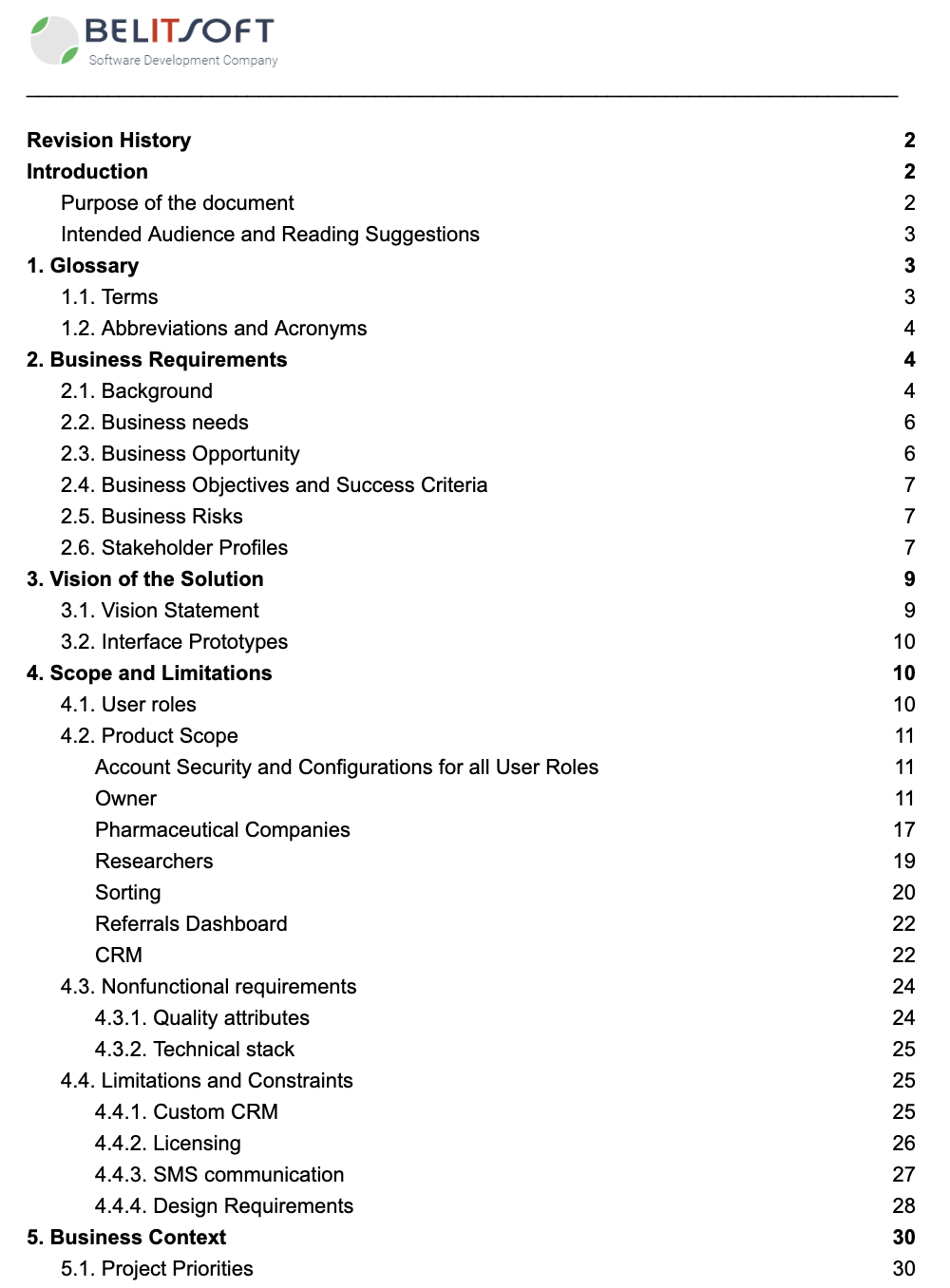In the complex routine of software development, a lone misstep can cause costly mistakes. To make sure everyone is in sync, refer to the 'Vision and Scope' document. Serving as a roadmap, it translates software requirements into terms every software engineer can grasp. But what exactly is this document? Often structured as a detailed 30-page Word or PDF, what key components make it stand out?


Crucial Components of Vision and Scope
Scope and Limitations
The Scope and Limitations section is the cornerstone of the entire "Vision and Scope"document.
It precisely demarcates the boundaries of your project, clarifying for all stakeholders what's included and what isn't.
This section encompasses several critical subsections, as:
- User Roles
- Product Scope
- Security and Configuration Module
- Owner Administration Module
- Client Module
- And other specifics as needed by the project
User Roles Subsection: Identifying and Defining Stakeholders
The Scope and Limitations part of the Vision and Scope document provides a comprehensive breakdown of all users associated with the software, laying out their interactions and functions.
It's akin to introducing the characters in a storyline,setting the stage for every subsequent action.


Product Scope: Tailored Development
Successful app development is more than just adding attractive features. Alignment with user needs is necessary. The "Product Scope" resonates every feature and progression with the objective.
This component is pivotal within the "Scope and Limitations" section of the "Vision and Scope" document.
Often represented as tables, this segment enumerates the software's features, their significance at every operational stage, and their implementation priority. In essence, it offers a strategic roadmap, highlighting what to develop, when, and the rationale behind it.






Non-Functional Requirements
In software development, non-functional requirements play a pivotal role in enhancing the overall app experience. These aren't about core features but the way they are executed.
Here are some typical non-functional requirements:
- Security: Guarding against unauthorized access
- Speed: System performance rate
- Reliability: Dependable, uninterrupted functionality
- Availability: System's operational periods


Technical Stack
After carefully reviewing the requirements, functionalities, and other project-specific details outlined in the Vision and Scope document, our technical experts recommend the most suitable technical stack.
The technical stack communicates the necessary tools, technologies, and languages for software development.
Choosing the right technical stack ensures the software is both functional and visually appealing.
Here's what's typically in the Technical Stack section covers:
- Programming languages
- Frameworks
- Databases
- Servers


Apart from Scope and Limitations, the Vision and Scope document encompasses other vital components:
- Vision of the Solution. This offers a clear snapshot of the software's end state, potentially accompanied by software prototypes.
- Business Requirements. This delves into a comprehensive analysis of business risks, opportunities, goals, and—when relevant—the market and competitors.
- Business Context. This outlines ongoing software advancements, shifting management priorities, and constraints encountered during the software development journey. This section is continually refined as the development progresses.
Want to secure the success of your project? Let our team of expert business analysts translate your business needs into the concise language of software developers. Let's talk!
Our Clients' Feedback


































Belitsoft has been the driving force behind several of our software development projects within the last few years. This company demonstrates high professionalism in their work approach. They have continuously proved to be ready to go the extra mile. We are very happy with Belitsoft, and in a position to strongly recommend them for software development and support as a most reliable and fully transparent partner focused on long term business relationships.
Global Head of Commercial Development L&D at Technicolor